CIE • Chemistry
Latest uploads for Chemistry at CIE. Looking for Chemistry notes at CIE? We have lots of notes, study guides and study notes available for Chemistry at CIE.
-
57
-
1
-
10
Courses Chemistry at CIE
Notes available for the following courses of Chemistry at CIE
-
A2 Organic Chemistry 1
-
A2 Physical & Inorganic Chemistry 1
-
All A2 Chapters 9701 1
-
All AS Chapters 9701 1
-
Arenes 1
-
AS Organic Chemistry 1
-
Chemistry 9701 9701 5
-
Full Detailed A2 Chemistry 9701 1
-
Lattice energy 9701 1
-
Structure and Bonding 9701 1
-
Unit 1 - Atoms, molecules and stoichiometry 2
-
Unit 10 - Group 2 9701 1
-
Unit 11 - Group 17 9701 1
-
Unit 13 - Nitrogen and sulfur 9701 1
-
Unit 14 - An introduction to organic chemistry 9701 4
-
Unit 15 - Hydrocarbons 9701 2
-
Unit 16 - Halogen derivatives 9701 1
-
Unit 17 - Hydroxy compounds 9701 2
-
Unit 18 - Carbonyl compounds 9701 1
-
Unit 19 - Carboxylic acids and derivatives 9701 4
-
Unit 2 - Atomic structure 9701 4
-
Unit 20 - Nitrogen compounds 1
-
Unit 22 - Analytical techniques 9701 1
-
Unit 23 - Organic synthesis 1
-
Unit 3 - Chemical bonding 9701 1
-
Unit 4 - States of matter 9701 1
-
Unit 5 - Chemical energetics 9701 1
-
Unit 6 - Electrochemistry 9701 2
-
Unit 7 - Equilibria 9701 1
-
Unit 8 - Reaction kinetics 9701 1
-
Unit 9 - The Periodic Table: chemical periodicity 9701 2
-
Worked Solution Paper 1 Summer 2019 9701 1
Popular books CIE • Chemistry
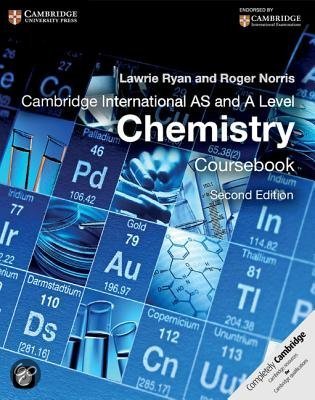
Lawrie Ryan, Roger Norris • ISBN 9781107638457
Latest notes & summaries CIE • Chemistry
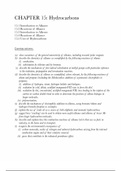
15.1 Introduction to Alkanes 15.2 Reactions of Alkanes 15.3 Introduction to Alkenes 15.4 Reactions of Alkenes 15.5 Uses of Hydrocarbons Learning outcomes: (a) show awareness of the general unreactivity of alkanes, including towards polar reagents. (b) describe the chemistry of alkanes as exemplified by the following reactions of ethane: (i) combustion. (ii) substitution by chlorine and by bromine. (c) describe the mechanism of free-radical substitution at methyl groups with particul...
- Book
- Summary
- • 16 pages's •
-
CIE•chemistry 9701
-
Cambridge International AS and A Level Chemistry Coursebook with CD-ROM • Lawrie Ryan, Roger Norris• ISBN 9781107638457
Preview 3 out of 16 pages
15.1 Introduction to Alkanes 15.2 Reactions of Alkanes 15.3 Introduction to Alkenes 15.4 Reactions of Alkenes 15.5 Uses of Hydrocarbons Learning outcomes: (a) show awareness of the general unreactivity of alkanes, including towards polar reagents. (b) describe the chemistry of alkanes as exemplified by the following reactions of ethane: (i) combustion. (ii) substitution by chlorine and by bromine. (c) describe the mechanism of free-radical substitution at methyl groups with particul...
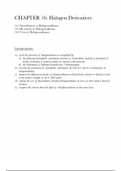
16.1 Introduction to Halogenoalkanes 16.2 Reactions of Halogenoalkanes 16.3 Uses of Halogenoalkanes Learning outcomes: (a) recall the chemistry of halogenoalkanes as exemplified by (i) the following nucleophilic substitution reactions of bromoethane: hydrolysis, formation of nitriles, formation of primary amines by reaction with ammonia. (ii) the elimination of hydrogen bromide from 2-bromopropane. (b) describe the mechanism of nucleophilic substitution (by both SN1 and SN2 mechanisms...
- Book
- Summary
- • 11 pages's •
-
CIE•chemistry 9701
-
Cambridge International AS and A Level Chemistry Coursebook with CD-ROM • Lawrie Ryan, Roger Norris• ISBN 9781107638457
Preview 2 out of 11 pages
16.1 Introduction to Halogenoalkanes 16.2 Reactions of Halogenoalkanes 16.3 Uses of Halogenoalkanes Learning outcomes: (a) recall the chemistry of halogenoalkanes as exemplified by (i) the following nucleophilic substitution reactions of bromoethane: hydrolysis, formation of nitriles, formation of primary amines by reaction with ammonia. (ii) the elimination of hydrogen bromide from 2-bromopropane. (b) describe the mechanism of nucleophilic substitution (by both SN1 and SN2 mechanisms...
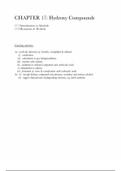
17.1 Introduction to Alcohols 17.2 Reactions of Alcohols Learning outcomes: (a) recall the chemistry of alcohols, exemplified by ethanol: (i) combustion. (ii) substitution to give halogenoalkanes. (iii) reaction with sodium. (iv) oxidation to carbonyl compounds and carboxylic acids. (v) dehydration to alkenes. (vi) formation of esters by esterification with carboxylic acids. (b) (i) classify hydroxy compounds into primary, secondary and tertiary alcohols. (ii) suggest character...
- Book
- Summary
- • 8 pages's •
-
CIE•chemistry 9701
-
Cambridge International AS and A Level Chemistry Coursebook with CD-ROM • Lawrie Ryan, Roger Norris• ISBN 9781107638457
Preview 2 out of 8 pages
17.1 Introduction to Alcohols 17.2 Reactions of Alcohols Learning outcomes: (a) recall the chemistry of alcohols, exemplified by ethanol: (i) combustion. (ii) substitution to give halogenoalkanes. (iii) reaction with sodium. (iv) oxidation to carbonyl compounds and carboxylic acids. (v) dehydration to alkenes. (vi) formation of esters by esterification with carboxylic acids. (b) (i) classify hydroxy compounds into primary, secondary and tertiary alcohols. (ii) suggest character...
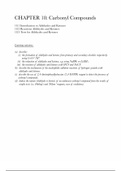
18.1 Introduction to Aldehydes and Ketones 18.2 Reactions Aldehydes and Ketones 18.3 Tests for Aldehydes and Ketones Learning outcomes: (a) describe: (i) the formation of aldehydes and ketones from primary and secondary alcohols respectively using Cr2O7²⁻/H⁺. (ii) the reduction of aldehydes and ketones, e.g. using NaBH4 or LiAlH4. (iii) the reaction of aldehydes and ketones with HCN and NaCN. (b) describe the mechanism of the nucleophilic addition reactions of hydrogen cyanide ...
- Book
- Summary
- • 9 pages's •
-
CIE•chemistry 9701
-
Cambridge International AS and A Level Chemistry Coursebook with CD-ROM • Lawrie Ryan, Roger Norris• ISBN 9781107638457
Preview 2 out of 9 pages
18.1 Introduction to Aldehydes and Ketones 18.2 Reactions Aldehydes and Ketones 18.3 Tests for Aldehydes and Ketones Learning outcomes: (a) describe: (i) the formation of aldehydes and ketones from primary and secondary alcohols respectively using Cr2O7²⁻/H⁺. (ii) the reduction of aldehydes and ketones, e.g. using NaBH4 or LiAlH4. (iii) the reaction of aldehydes and ketones with HCN and NaCN. (b) describe the mechanism of the nucleophilic addition reactions of hydrogen cyanide ...
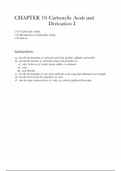
19.1 Carboxylic Acids 19.2 Reactions of Carboxylic Acids 19.3 Esters Learning outcomes: (a) describe the formation of carboxylic acids from alcohols, aldehydes and nitriles. (b) describe the reactions of carboxylic acids in the formation of: (i) salts, by the use of reactive metals, alkalis or carbonates. (ii) esters. (iii) acyl chlorides. (c) describe the formation of esters from carboxylic acids, using ethyl ethanoate as an example. (d) describe the acid and base hydrolysis of est...
- Book
- Summary
- • 8 pages's •
-
CIE•chemistry 9701
-
Cambridge International AS and A Level Chemistry Coursebook with CD-ROM • Lawrie Ryan, Roger Norris• ISBN 9781107638457
Preview 2 out of 8 pages
19.1 Carboxylic Acids 19.2 Reactions of Carboxylic Acids 19.3 Esters Learning outcomes: (a) describe the formation of carboxylic acids from alcohols, aldehydes and nitriles. (b) describe the reactions of carboxylic acids in the formation of: (i) salts, by the use of reactive metals, alkalis or carbonates. (ii) esters. (iii) acyl chlorides. (c) describe the formation of esters from carboxylic acids, using ethyl ethanoate as an example. (d) describe the acid and base hydrolysis of est...
